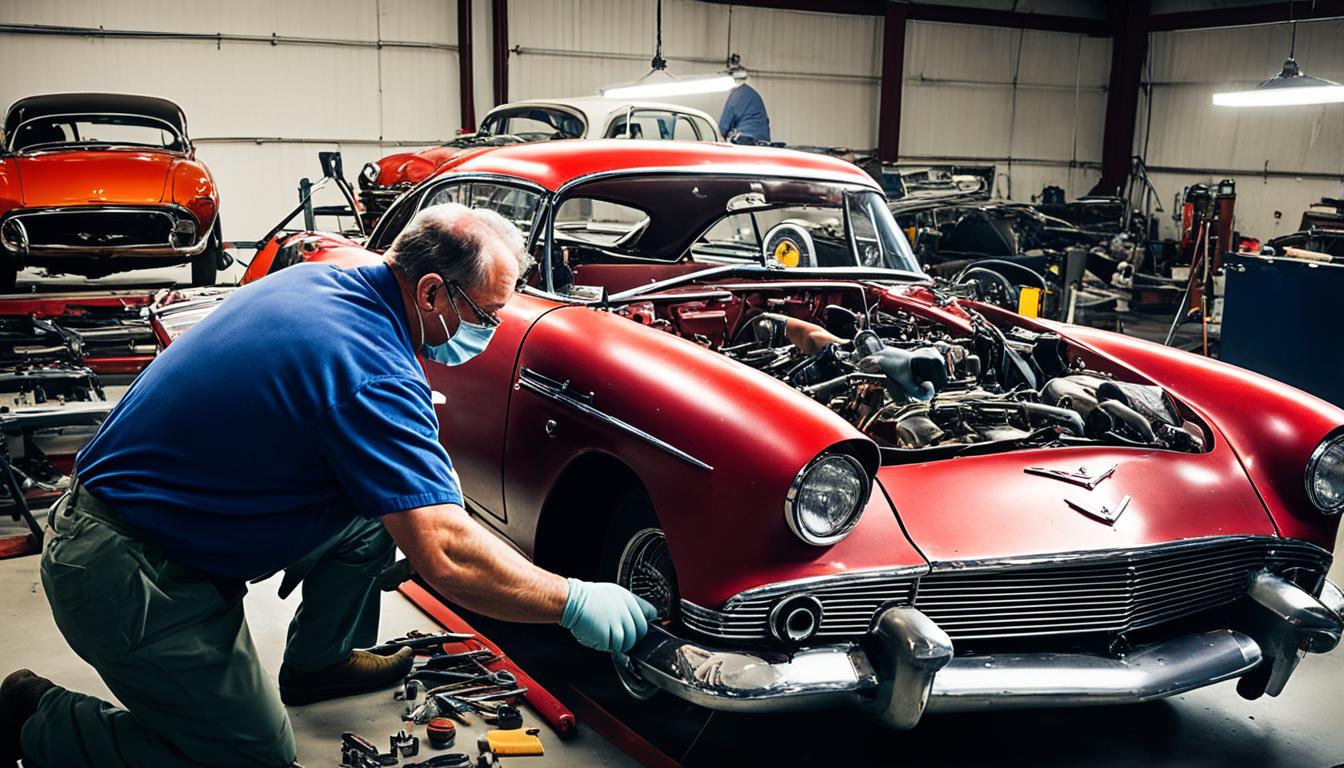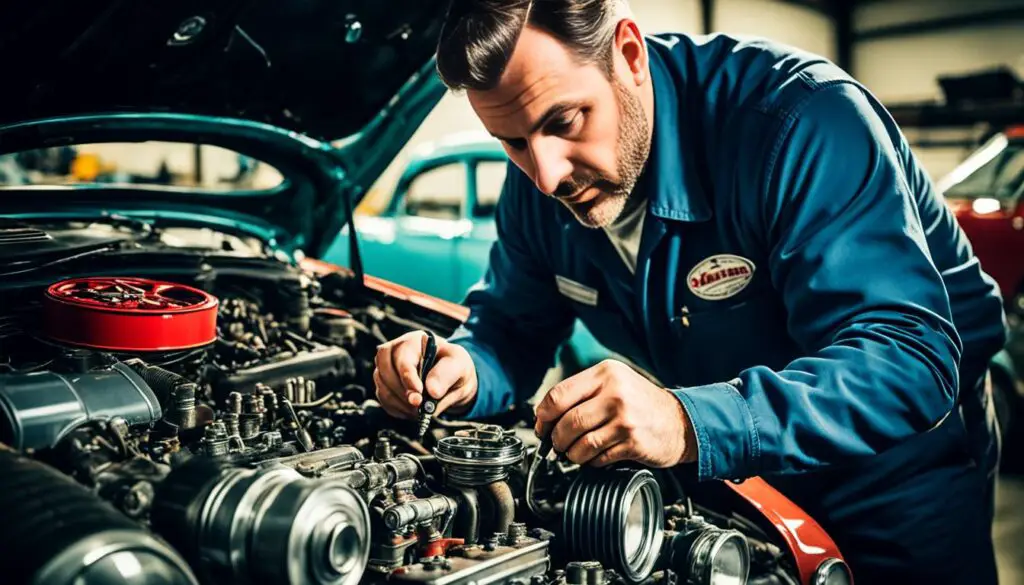
Pro Tips: Classic Car Restoration Tips and Tricks Unveiled
Classic car restoration is like taking a step back in time. In this section, you’ll learn how to revive an old beauty. Our tips cover everything from start to finish. This includes checking your car, making a plan, and finally showing off your work.
You don’t need experience to use these tips. Whether you’re just starting or already know a lot, you’ll find them helpful. They make restoring your classic car easy and fun.
Key Takeaways:
- Assess your classic car’s condition thoroughly, including the exterior, interior, and mechanical systems.
- Create a restoration plan and budget to outline the scope of work and ensure financial feasibility.
- Allocate 20% of the budget for unexpected expenses.
- Gather the necessary tools and resources for your project.
- Follow the restoration process step by step, including disassembling, addressing bodywork and engine restoration, refurbishing the interior, painting and finishing, and final assembly.
Assessing Your Classic Car: The First Step in the Restoration Journey
Assessing your classic car is key to a successful restoration. You check the car’s body, inside, engine, and other parts. This step helps you understand the car’s condition and what work it needs.
Look closely for any wear, rust, and damage. Keep detailed notes of everything you find. This record will help you not miss any problems during restoration. Focus on the body and interior, looking for rust or wear.

But, checking your classic car is more than just looking. It’s a chance to dream about its future. Think about how you want your car to look and run after you restore it. You could aim for its original look or mix in some new features.
This first step is crucial for the whole restoration. It helps you know what needs to be done. With a thorough assessment, you plan better and stay on budget. This way, every choice you make in the restoration leads to a better vintage car.
Key points:
- Assessing your classic car includes examining its exterior, interior, engine, transmission, suspension, and electrical systems.
- Document any wear, rust, or damage found during the assessment to address them later in the restoration process.
- Set restoration goals and envision the desired outcome to guide the restoration process.
- The assessment phase shapes the foundation of the restoration journey and influences subsequent steps.
Planning and Budgeting: Essential Steps for a Successful Restoration
First, check your classic car to know what it needs. The next big thing is planning how to restore it and how much it will cost. You should make a detailed plan and set timelines for each task. This makes things way easier and helps the project go smoothly.
When budgeting, it’s smart to spend your money wisely. Decide on a budget for the restoration project. Include the costs for parts, labor, and any other help you might need. Save about 20% of your budget for any unexpected costs.
Getting the right tools and resources is also key. Make a list of what you need for every job, like fixing the engine or painting. Find trusted suppliers and order parts early to prevent delays.
Restoring a classic car may not be all smooth sailing. But, if you have a solid plan, manage your budget well, and have everything you need, you’ll be ready for whatever comes your way. You can make your classic car look great again.
FAQ
What is classic car restoration?
Classic car restoration makes an old car like new again. Old and worn parts are repaired or replaced. This brings back its original look and function.
Why is assessing my classic car important?
It’s vital to check your classic car’s condition. This lets you know what parts need fixing. You can spot wear or damage, making your restoration plans clearer.
How do I assess my classic car?
To check your car, look closely inside and out. Also, inspect the engine, transmission, and other systems. Make a note of any issues you find.
It’s also smart to take pictures and write notes. This helps during the restoration.
What should I consider when planning and budgeting for my restoration project?
For planning and budgeting, think about the work needed and its timing. Estimate costs for parts, labor, and tools. Make a detailed plan. Always be ready for extra expenses.
Setting aside 20% of your budget for surprises is wise.
How can I gather the necessary tools and resources for my restoration project?
Start by listing the tools you need. Then, look for them at local stores and online shops. You can rent tools too, especially if they’re costly or you don’t need them often.
What are the main steps in the restoration process?
Restoration involves taking the car apart, fixing the body and engine, and updating the interior. Then, it’s painted and put back together. Each step needs close focus and skill.
